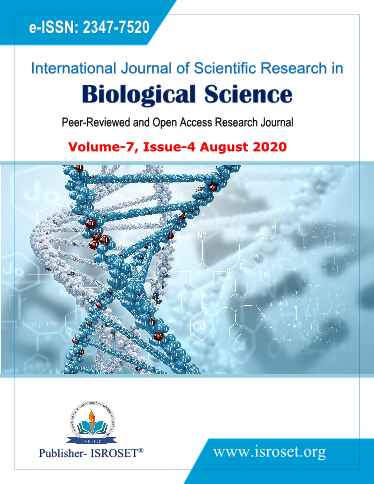Human-Tiger Conflicts a Current issue of Central India, Paradigm to Rethink the Consequences and Challenges of changing behaviour of Wild Animals in Human Dominated Landscape
Keywords:
Conflict, conservation, mitigation, consequencesAbstract
Human-Tiger conflict or conflict with other wild animals imparts the great challenges for conservation mitigation. Day by day changing cognition and behaviour like movement pattern, killing or preying skills of big cats itself great challenges to resolve. Prey biomass depletion and seasonal variations brings ecological stress in the wild habitat emphasis the adverse movement pattern in human dominated landscapes to get livestock predation in comfortable zone. For this study three important forest division have been opted i.e. Yavatmal, Pusad and Pandharkawada Forest division of Maharashtra India. Last 5 years conflict cases were analyzed along with compensation amount released by forest department.
References
Stoen, O.G and Wegge, P (). Prey selection and prey removal by tiger the dry season in Lowland Nepal.Mammalia; 60(3): 363-373, 1996.
Kumar.S. (2016). Ecological Stress in form of Prey Depletion in Corbett Tiger Reserve, A case Study in Dry Season: Livestock Predation and Conflict Management. Res.J.Recent Sci. Vol.5 (9), 57-61, Sep. 2016. E-ISSN 2277-2502.
Kumar,S., Porcupine, Hystrix indica is in Tiger?s Diet, A Case Study, A Choice of Food or Habit For Survival In Corbett Tiger Reserve, Ramnagar, Uttarakhand, India.Int.J.Life.Sci.Scienti.Res.,2(4): 509-512, 2016. (ISSN:2455-1716).
Wild Animal in Central India-A.A.Dunbar Brander. Natraj Publication. ISBN:81-8158-117-4.
Kumar, S. and Kumar.S. Human-Tiger Conflict, Livestock Predation in Corbett Landscape a Case Study of Compensation Data Analysis in Ramnagar Forest Division. . International Journal of Trend in Research and Development, Vol. 4(3), 2017. ISSN: 2394-9333.
Kumar, S,and Kumar. K. (2015). Human-field (Panthera tigris) conflict in Kosi Corridor Habitats: Implications for Tiger conservation in Corbett Landscape, India. Int.Res.J..Biological Sci.Vol..4(7),1-3,July 2015: ISSN 2278-3202.
Kumar, S. (2015).Habitat Fragmentation Lending to Loss of Gene Flow From Source of Population of Tiger (Panthera tigris), A Study of Corbett Reference to Corridor, Ramnagar, India. International Journal of Innovation Sciences and Research.Vol.4, No.8, pp. pp.423-425,Aug-2015.
Koppiker, B.R. and Sabnis, J.H. Further studies on the identification of hairs of some Indian mammals. J. Bomb. Nat. His. Soc., 74 (1): 50-59, 1976.
Gurang,C.P. People and their participation : New approaches to resolving conflicts and promoting cooperation. In J.AMcNeely (Ed.), Partnership for Conservation: An Introduction pp223-233, 1995. Island Press,Washington DC.
Karanth,K.U. Distribution and dynamics of tiger and prey populations in Maharashtra, India. Final technical Reprt, Centre for Wildlife studies, Bangalore, 2005.
Downloads
Published
How to Cite
Issue
Section
License

This work is licensed under a Creative Commons Attribution 4.0 International License.
Authors contributing to this journal agree to publish their articles under the Creative Commons Attribution 4.0 International License, allowing third parties to share their work (copy, distribute, transmit) and to adapt it, under the condition that the authors are given credit and that in the event of reuse or distribution, the terms of this license are made clear.







